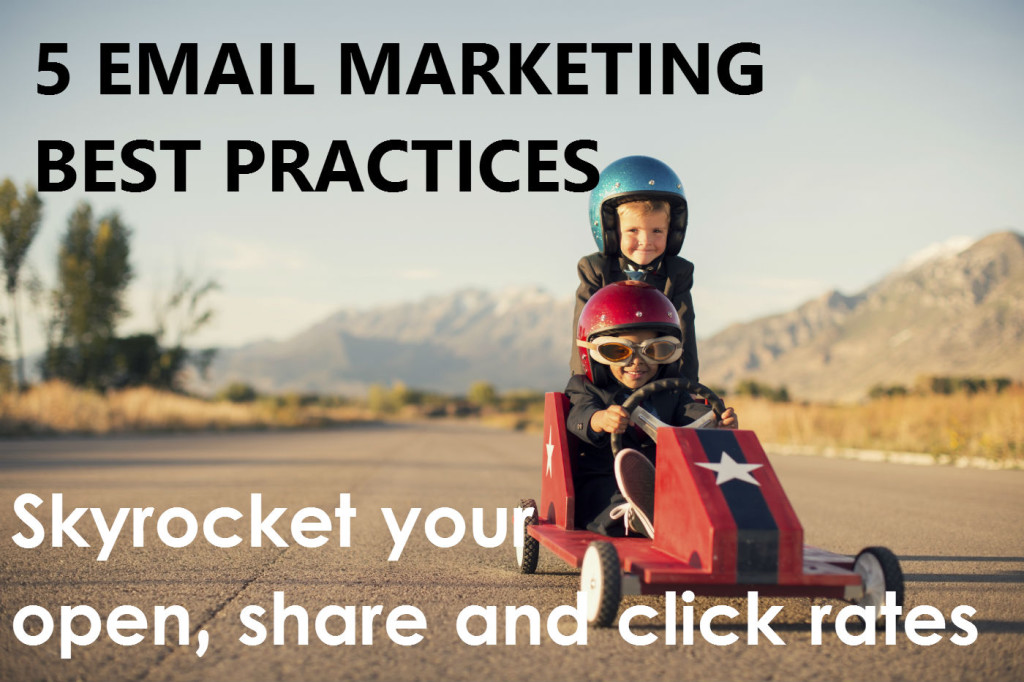
Email marketing is still one of the top most effective digital marketing techniques, according to a recent survey of small business owners.
If you’d agree, and you have an email list you’re regularly marketing to, than please accept my pat on the back!
You’re much farther ahead than so many business owners at staying in touch with existing and future customers alike.
As us marketers are so fond of saying “the money is in your list”.
Because, if you haven’t contacted your customer in 90 days, they’re not your customer.
Here are 5 best practices to help you get the money out of your list; increasing your email open and click rates.
Use your customer’s name. Repeatedly.
Your name is your favorite word of all time.
And it’s the same with your customers. Make your emails stand out from the never ending stream of emails in your customer’s inbox.
Most email marketing software companies, like Mailchimp, have a “shortcode” that you can use in the first paragraph of your email to pull your customer’s first name from your list and display it in the email you’re sending.
Mailchimp’s shortcode is [F*NAME] – use it, and watch your open rate soar.
Refine your email subject.
Watch buzzfeed.com and the front page of Reddit for trending topics. You’ll notice a pattern among so many top stories on these sites. They pique your curiosity.
Try creating curiosity in your customer, by creating an enticing headline that promises answers and solutions…as soon as they open your email.
For bonus points, use your customer’s name right in your email subject headline.
Use the Social Sharing Options.
You cannot receive what you do not ask for.
Asking for likes and shares on social media is a great way to get, you guessed it, shares and likes on social media.
Make it easy for your newsletter subscribers by taking advantage of the sharing modules provided with most email marketing providers.
Add in a little blurb explaining why someone should share that is in line with what they care about.
Recently we devised a share-line for a niche women’s boutique that was promoting an invite only event.
We crafted a line that was along the lines of “Don’t keep this secret to yourself; share with a friend. “ to appeal to the woman’s pride at having the inside scoop in a coveted industry.
Links, Links and More Links.
If your newsletter isn’t linking back to your website, it’s time to change that, like, yesterday.
With email marketing’s sophisticated tracking tools, you don’t want to miss the opportunity to see who’s engaged with your brand.
Tracking the amount of link clicks, as well as the click-ees themselves is a savvy way of determining what content appeals to who.
Create links in the text, the image as well as the headline. Make it easy for your subscribers to get to your website.
Have a call to action.
What goal do you have for your email campaign?
Whether it’s clicks to your website, calls to your location or social shares, you have to be explicit about what you want.
Make it easy for your subscribers to do what you ask by making the call to action the most visually prominent part of your newsletter.
I really like Mailchimp’s big orange button, for an unmistakable call to action.














